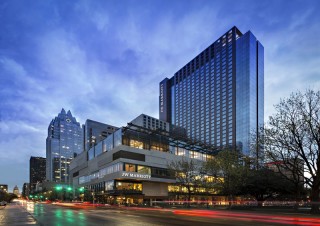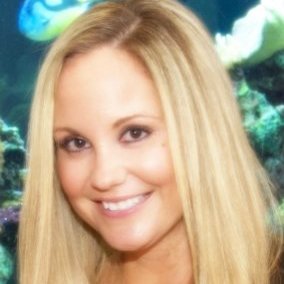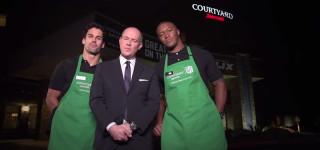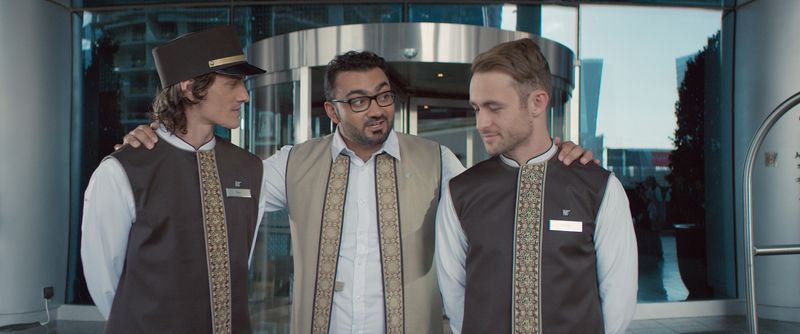Nothing says “get me home right now” faster than when travelling becomes reduced to room service and watching local celebrities thousands of miles away on a TV you just can’t seem to operate.
Marriott International realizes the modern-day traveler welcomes fun distractions—yes, even on business trips—and is consistently adding layers of entertainment that serve to be just as refreshing as a great meal and a hot shower.
The global hospitality company used the 30th annual SXSW in Austin, Texas last week to showcase secondary elements to a marketing strategy that is not just built around a hotel-based touch point.

Marriott partnered with Universal Music Group to provide a fully immersive music experience by presenting daily artist showcases, performances and other special events in the first-ever takeover of a hotel at the JW Marriott Austin during the SXSW Music Festival. The hotel was transformed into a music venue throughout the course of the week. The best part for Marriott Rewards members? They didn’t need a SXSW festival badge to attend concerts at the hotel.
Understanding very well that travel is connected through visual-based experiences, the Marriott Content Studio—the company’s in-house media team that produces first-rate content—was on-hand to capture El Dusty, Prince Fox and Mayer Hawthorne’s groovy music sets last Tuesday at the snazzy rooftop poolside DJ bash.
Marriott’s content studio, launched in 2014 by vice president of global creative David Beebe, has quickly become the standard on how industry-leading brands should deliver captivating material for consumers. Among a wide variety of coolness, they’ve brought virtual reality to guest rooms, and even used their in-house studio to bring back the award-winning, 19-minute film “Two Bellmen,” just to name a few. Travel entertainment is their forte.
Catherine Leitner, the senior director of Buzz Marketing at Marriott International, has seen the evolution for Marriott in the marketing space over the course of the last 15 years first-hand with the company. She joined [a]listdaily to discuss how they’re capturing compelling content to attract next-generation customers.
How did the partnership with Universal Music Group come about? Why did it make sense to do it?

This is a great example of what the future, experiential space looks like for Marriott. I think you’ll be seeing more of Marriott International doing things in entertainment like this around the world. Something like music is really universal. It’s almost like a universal language—for anybody of any age—to connect to. When I think of Marriott, our aspiration is to be the world’s favorite travel company. When I think about UMG, arguably the most powerful music label in the world, it’s a great marriage because we’re bringing a universal language of music to our guests and consumers in a meaningful way. It goes hand-in-hand, when you think about it. In order to do that, you have to find ways to bring it to life for the traveler. … What we’re hoping to do with our partnership with UMG is really get in front of audiences that may not be as familiar with us, and that specifically is the next-generation traveler. They are the most important consumer for us as we look ahead. We want to introduce ourselves to them when they are young, and attention-seeking. What we’re hoping to gain from an activation like SXSW is a couple of things: We’re hoping to generate some real interest and awareness in our Marriott Rewards Program, and connect with them emotionally enough where they want to stay with us at some point.
Marriott is a legacy hotel and hospitality brand. What are the marketing challenges it’s currently facing? How are you trying to reach the next-generation traveler?
It’s an interesting question. I think we can agree that Marriott is a beloved and iconic American brand. Marriott International is not just one brand—it’s many different ones. Many people, from a brand recognition standpoint, are familiar with it. In many cases, we’ve traditionally been known as a brand for business travelers, or for frequent travelers. When we think about the next-generation traveler, we may almost think of it like ‘this is the hotel my dad stays in when he travels for business.’ What we’re trying to do is expand that customer base. As we’ve seen the traveler and travel landscape grow, it’s not just the business traveler searching for a hotel as a place to stay. They’re looking for something more meaningful, more experiential than just a hot shower and a clean bed. They’re travelling in a deeper way. What we’re trying to create in many of our different brand experiences is to connect with the consumer. In order to do that, you have to branch outside of traditional hotel marketing—which is a space that we are very comfortable with and do well in.

Airbnb is a common and sometimes much preferred travel option for millennials. How do you reach millennials with your message?
It’s a great question. Airbnb is an unbelievable platform for people looking for authentic experiences all over the world. Marriott is doing that in a different way by creating and introducing new brands that are specifically targeted to this consumer. The best example of that is our Moxy Hotels brand that was launched in Fall 2014. It’s a brand that was created strictly for the millennial traveler. It’s led by a young, fresh, female executive who really has her finger on the pulse of what that traveler’s looking for—from hotel and room designs to public spaces—and the price point makes it reasonable and attainable.
The Marriott Content Studio is the envy of a lot of brands. What are some innovative ways that you are delivering content? What kind of content best resonates with your audience?
On the Buzz Marketing side, we’re creating partnerships with interesting like-minded global partners like UMG. Through an activation like the one at SXSW, what we’re able to capture beyond just the performances is really the content. Whether it’s a moment with the artist behind the scenes, or a sit-down interview, you can do it with a variety of ways. You can create it on your own, like ‘Two Bellmen,’ which was entirely developed by the Marriott content team. Or, you can look at our partners, like the NFL or NBA to see where we can leverage their tremendous content and opportunities.

Marriott used the Super Bowl to make a splash on Snapchat, joining an exclusive group of brands who experimented on the channel. What’s been the major takeaway from that trial?
As we’re looking for platforms beyond Facebook, Twitter and other familiar social media channels, I think it was a great experiment for so many different brands. Snapchat was something that we went out on a limb for, I guess you can say, and tried something different. There’s a huge consumer base using Snapchat, so it made sense for us. The key is finding the right way to share real-time moments. I don’t know if anyone has mastered it yet, but it’s an exciting space and it’s constantly evolving. We need to be where our consumers are.
The travel industry is a very competitive one. How is Marriott separating itself from the pack?
What really sets us apart, at least this is my personal feeling, is our standard of service across all hotel brands around the world. There’s a certain level of standard and service that comes along that customers have come to expect. That’s always a key differentiator, and will continue to be as we grow around the world and introduce new brands.
Follow Manouk Akopyan on Twitter @Manouk_Akopyan.

